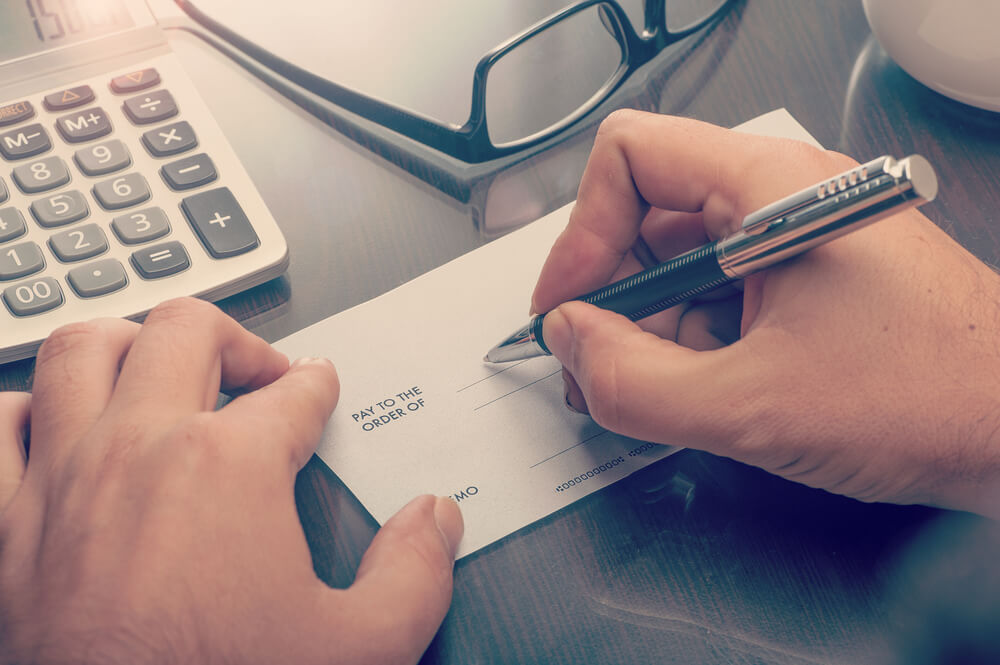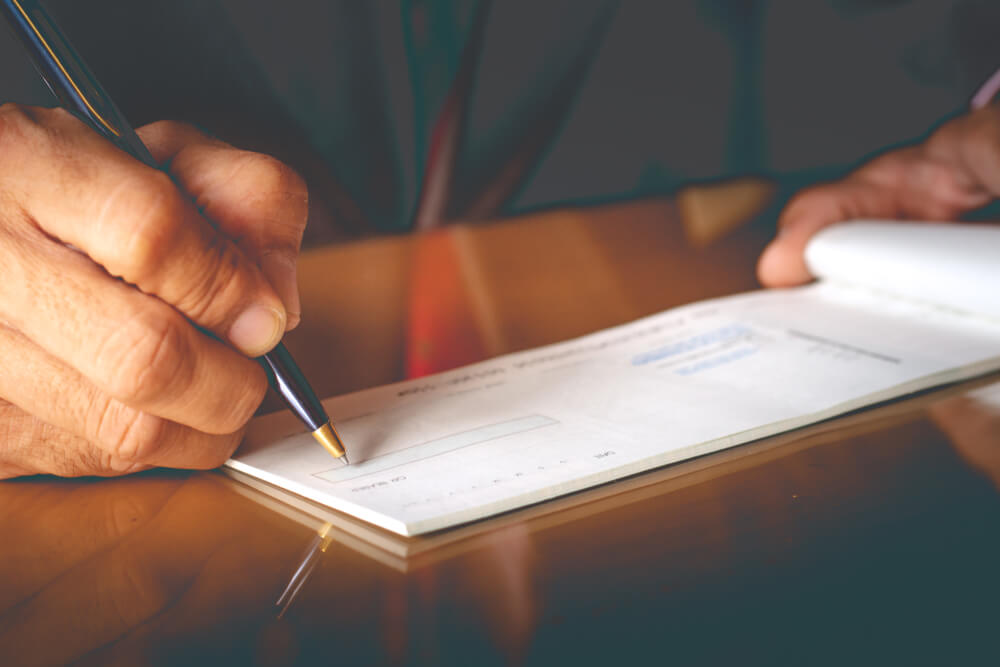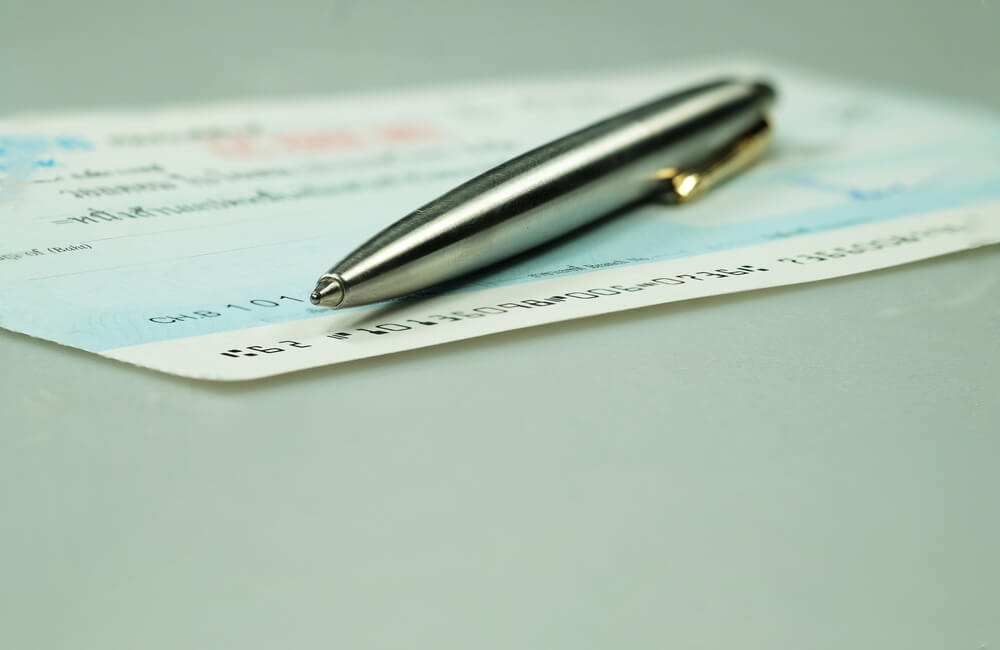In this day and age, handwritten checks might seem like antiquated financial technology. However, there are occasions when nothing else will do. For example, your apartment manager is unlikely to accept cash payments. Venmo is also unlikely to make the cut. So, it’s still important to know how to write a check, however old-fashioned it might seem. If you want to know and master how to write a check plus other check writing essentials, this article is for you. If you don’t have the time or the interest to learn, invest in the help check writing companies, for whom check writing services are the stock in trade.
The Anatomy of a Check
Let’s begin with the anatomy of a check. On the top of the check, you will see a field that says, “Pay to the order of.” Below it, on the right side of the check, you will see a small box with a dollar sign next to it. Don’t write your own; the one provided will do just fine. To the left of this box is a longer one, where you will spell out the dollar amount on your check. The tricky part of this field is knowing how to write cents on a check. Below this larger field are two additional fields. The one to the left is for memos. The one to the right is where you sign your name.
Now let’s examine each of these fields in detail.
Pay to the Order Of
In the field marked “Pay to the order of,” write your recipient’s full name. Make sure that you spell it correctly and that the name of the recipient is the one linked to the bank account where you will deposit the check. To figure out details like this is simple. All you have to do is ask your recipient to whom the check should be written out.

The Numeric Amount
Write the dollar amount in decimals in the field indicating the numeric amount. Ensure you leave two trailing decimal places, even if it is a round number (with no cents indicated). It’s a matter of form rather than math. Make sure you write legibly, as this is the first part of the check that the ATM’s OCR technology will verify if that’s how it’s deposited. That’s all there is to this part of the form.
The Written Amount
The next part is a little trickier. Consider the format usually used to write numbers out in the long field indicating a written amount. It’s not hard, but it takes a little bit of practice. Here are the rules that you’ll have to keep in mind:
- If it is less than 20, simply write that number out. Forget cents for a moment; we’ll return to them later.
- If it is a number higher than 20, you may have to use a hyphen. Here are a few examples: a) Twenty-two b) Fifty-seven c) thirty-five.
- If the amount of your check is higher than 100, do NOT write an additional “and” between the hundreds and the tens. For example, the following are correct: a) One hundred thirty-six b) Four hundred seventy-two c) Eight hundred ninety-one.
You can adapt the above rules for whatever amount you have to pay out. To take an example of a very high amount, consider a number like 3,457,120,486. You would write this as “Three billion four hundred fifty-seven million one hundred twenty thousand four hundred eighty-six.” Notice the pronounced absence of the word “and” here; there is a good reason for it.
Writing Cents on a Check
The issue of how to write a check with cents is easier than it might seem. If you don’t know yet, here’s how to write cents on a check: when cents are involved, you must use the word “and.” Place it after the dollar amount, followed by the cent amount in fraction form. It’s useful to think of the cent amount as an actual percentage. For example, you could write thirty-two cents as 32/100. Note that at this point, we have returned to using decimal notation rather than expansively writing the amount out. If this is tricky, invest in the help of a trusted check writing company.
How to Write a Check with Thousands and Cents
Knowing how to write a check with cents would no longer be as tricky once you get the hang of it. Writing cents on a check follows the same principle, regardless if you are writing a hundred or a thousand. For instance, if the amount of the check is $2,000, write “two thousand.” When writing a check with cents, use a fraction with “100” on the bottom.
Let’s say the amount is $55.99. When writing it down, you will write “Fifty-five and 99/100.” Even if the amount has no cents involved, including a 00/100 for clarity is ideal. Let’s say you are writing a check for $2,500. On the check, you will write “Two thousand five hundred and 00/100.”
When writing the amount in words, ensure that you write it as far to the left as possible. Then draw a line through the remaining space right to the amount listed. This can help ensure the field is filled out and can help prevent others from altering the amount you have written on the check.
Full Examples
Here are a few more examples for the full amount of a check. To use a real-world example, imagine you’re at a coffee shop. The amount you need to pay is $2.80. If the café accepts checks, you would write this amount as “Two and 80/100.”
You will notice that the words “dollars” and “cents” are never used on the written field. Just the written amount will do fine. Anything else is frill.
One final note on the written portion of a check. After writing the full amount, if there is space left in the field, you might strike it out with a straight horizontal line. This is normal, but not necessary.

Memos
Let’s continue to examine the remaining fields. There is a field to add a memo to your check. If you’d like, you can fill it out to remind yourself what the check was for. On your imaginary check spent at the café, you might have written simply, “coffee,” and that would suffice when you go back and balance your checkbook. This can also be handy for your friends. For example, if you had written a check for someone else to deposit to their coffee fund, the same “coffee” memo would be useful.
Signing Your Check
The final field is perhaps the most important, but it also allows for a certain amount of personal creative expression. This is the signature field. Sign your check with your name, and do it consistently with your signature on other official paperwork if possible. This identifies you as the issuer of the check. The bank might consult this field to verify that you wrote it if something goes wrong. So, you probably shouldn’t get too carried away on the dotted line, although as already mentioned, you have a certain amount of creative freedom with your own handwriting. Legitimate check writing services will still ask you to fill out this part of the form.
Voiding a Check
There’s only one issue left to cover when it comes to writing a check. If you’ve made a major mistake in one of the fields on your check, you may need to void it to make sure that no one tries to deposit it erroneously. To void a check, simply write the word “VOID” in such a way that it covers all the fields on the check, and then once more in a blank space where you can clearly see it. This way, you obviously can’t deposit it.
That’s the long and short of writing checks. Was it helpful? You might want to practice on your own before you try to send money to anyone if you’re rusty, or if you’ve never done it before. You can also compare your form to images of checks on the internet and practice by using a blank piece of paper. Before long, you’ll see that it’s really not rocket science. Soon enough it will become second nature. If it’s still a bit much to handle, call our team at CheckIssuing today.
Writing a Check to Yourself
There are a couple of ways you can write a check to yourself. One option is to write your name as the recipient and deposit the check to another bank account. Another option would be to make the check payable to “cash” so you can cash it. While you can write a check to yourself, you need to be aware that credit unions and banks might refuse to cash your check or charge a fee if you don’t have an account with them. To avoid any inconvenience, you can look into other ways to move money, like money transfer apps or ACH transfers.
How to Fill Out a Check
Your check must be filled out accurately and free from mistakes. Before you write a check, keep the following basics in mind:
- Use a pen and print everything (except the signature) so it’s easy to read
- Never sign a blank check. Always fill in the recipient’s name and the amount before signing
- Double-check and make sure all your entries are correct
Other Essentials to Remember
- Don’t forget to date your check. Ensure your check reflects the current date. Backdating a check is usually not allowed; sometimes, it might even be considered illegal. In some instances, a postdated check might be legal, but it needs to be deposited before the date indicated on the check so it won’t bounce or get over-drafted.
- Fill in the name of the recipient. Also known as the payee, the recipient is the person or business to whom you write the check. The field reserved for the recipient’s name typically begins with “Pay to the order of.” Ensure you use the recipient’s full name and it is spelled correctly. The check will be returned to you if there are mistakes in the person’s or business’s name.
- Write the amount in numbers. The amount in numbers is typically placed in a small box right next to the recipient’s name. Write the amount big enough so it fills the entire space. This can help ensure fraud is prevented.
- Write the dollar amount in words. You will write the amount in words right below the recipient’s name. When writing the amount in words, write as far to the left as possible and draw a line through the remaining space so the field is full. This helps ensure no one can change the amount you have written.
- Sign the check. Lastly, you must sign on the line at the check’s bottom right corner. Your signature is one of the most important components of the check. Without it, your check can’t be deposited or cashed.
That’s the long and short of writing checks. Was it helpful? You might want to practice on your own before you try to send money to anyone if you’re rusty or have never done it before. You can also compare your form to images of checks online and practice using a blank piece of paper. Before long, you’ll see that it’s not rocket science. Soon enough, it will become second nature. If it’s still a bit much to handle, call our team at CheckIssuing today.






